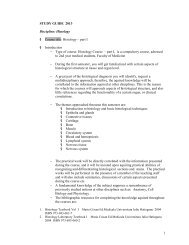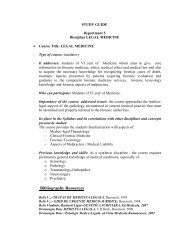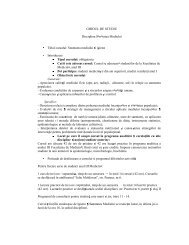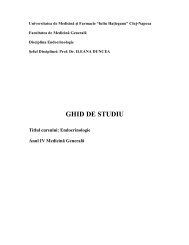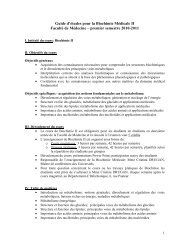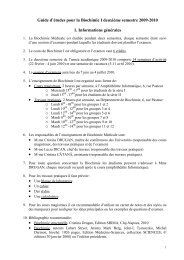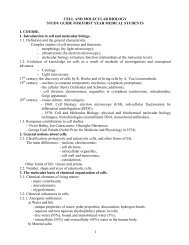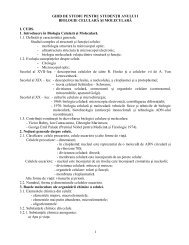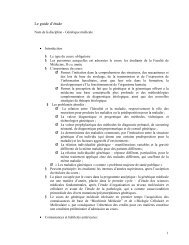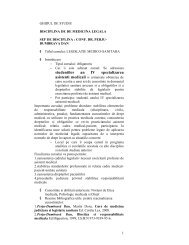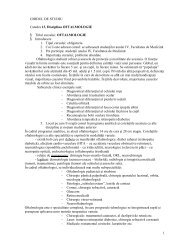Study Guide RADIOLOGY - UMF
Study Guide RADIOLOGY - UMF
Study Guide RADIOLOGY - UMF
You also want an ePaper? Increase the reach of your titles
YUMPU automatically turns print PDFs into web optimized ePapers that Google loves.
<strong>Study</strong> <strong>Guide</strong> – Radiology – Faculty of Medicine - IV th Year 6• Characteristic (featured) X-ray: the incident electron strikes a targetatom's electron and it dislodges it from the orbit electronicrearrangement with heat and characteristic X-ray emission having Eand λ corresponding to the kinetic energy difference between twoenergy levels.o X-ray properties• Spread round (spherically) from the point of origin• are invisible and propagate in straight line at the speed of light• Their intensity decreases with the square of the distance• Their penetrability is inversely proportional to wavelength• Are absorbed and emitted in quanta characteristic of each chemicalelement (wave-particle duality photon)• Are absorbed by bodies they propagate through• Induce the effect of luminiscence (photoelectric), photochemical(photosensitive), ionizing and biological effects• are not deviated by electric or magnetic fields (no charge, no mass)• May suffer optical phenomena such as refraction, diffraction andpolarizationo Effects of X-rays:• Chemical• water radiolysis• Photochemical effect - breaking the link of the moleculeAgBr• Direct ionization (collision and braking)• Indirectly ionizing:• Compton scattering = energy transfer between aphoton (hard RX with high E) and an target electronfrom the environment RX with lower energyemitted• Thomson effect occurs when soft rays strike anelectron in the target environment, which is notdislodged from the orbit, it swings on the spot,emitting secondary X-ray with E = E of the incidentbeam• Photoelectric effect: complete transfer of theincident photon energy to target electron radiationemitted in the visible (light) spectrum• Materialization effect: electron + proton = neutron• Biological: Cell, tissue, somatic genetic feto-embryonic, cancero Radiological image formation - Principles• Geometric principles:• If X-ray source (focus) is a point then the image will be clear,with sharp margins• Conical beam shape always the radiological image will bea little larger and distorted compared to reality• Deformation is minimal in the range of the central beam andmaximal at the periphery of the image• Propagation in a straight line• Central beam perpendicular to the center of the structure /region examined• A plane of the examined region must be parallel to the film• Remember!• Projection of an object on the film plane is larger than theobject• Projection size increases with increasing distance between theobject and film



